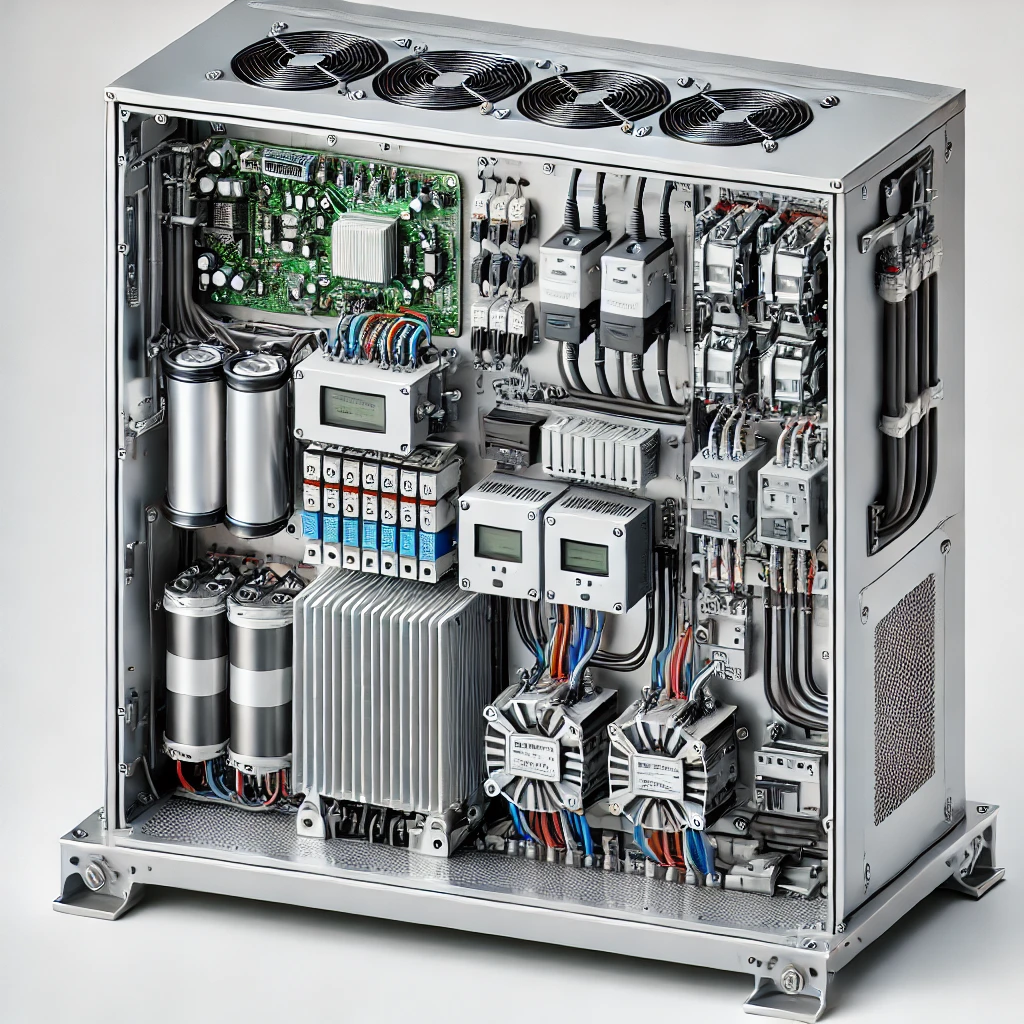To design and build efficient and durable 175kWh EV chargers, the following materials are necessary. These materials ensure safety, durability, and compliance with industry standards.
1. Electrical Components
a. Power Electronics
- High-Voltage Transformers
- Converts and regulates the voltage from the power grid to the EV’s battery.
- Specification: Rated for 175kW capacity, capable of handling 380V–480V AC input.
- Rectifiers and Inverters
- Rectifiers: Converts AC to DC.
- Inverters: Converts DC back to AC for certain operations.
- Capacitors and Inductors
- Filters out electrical noise for smoother operation.
- Power Modules
- Silicon Carbide (SiC) MOSFETs or IGBTs for high-efficiency switching.
b. Connectors and Cables
- EV Connectors
- CCS (Combined Charging System)
- CHAdeMO
- Type 2 (IEC 62196)
- Charging Cables
- High-current, liquid-cooled cables to prevent overheating.
- Internal Wiring
- Copper wires with high thermal resistance and low electrical resistance.
- Specification: AWG 4 or 6 for power lines, AWG 10–12 for control lines.
- Surge Protection Devices
- Protects against voltage spikes and grid irregularities.
2. Structural Materials
a. Enclosure/Chassis
- Sheet Metal (Steel or Aluminum)
- Galvanized Steel: Durable and resistant to rust and corrosion.
- Aluminum: Lightweight and corrosion-resistant.
- Powder Coating
- Applied to the enclosure for weatherproofing and aesthetics.
- Gaskets and Seals
- Ensures IP65 or higher waterproof and dustproof rating.
b. Cooling System
- Liquid Cooling Units
- Keeps internal components at optimal temperature.
- Material: Copper or aluminum heat exchangers with coolant circulation.
- Fans and Radiators
- Industrial-grade cooling fans.
- Radiators made from aluminum or copper.
3. Interface Materials
a. Display Unit
- Touchscreen Display
- Material: Tempered glass or Gorilla Glass for durability.
- LCD or OLED screens for user-friendly interfaces.
- Keypad or RFID Reader
- Material: Polycarbonate or ABS plastic for durability.
4. Base and Mounting Components
- Mounting Pole/Base Plate
- Material: Stainless steel or aluminum alloy for strength and corrosion resistance.
- Bolts and Anchors
- Stainless steel or zinc-coated for weather resistance.
5. Software and Connectivity Components
- IoT Modules
- Connectivity: 4G/5G, Wi-Fi, and Ethernet ports.
- Material: PCB boards with embedded chipsets.
- Microcontroller or PLC
- Manages the operations and monitors power distribution.
- Example: ARM-based processors or Raspberry Pi alternatives.
- Payment Systems
- NFC Readers for contactless payment (e.g., Tbank crypto integration).
6. Safety and Standards Compliance
a. Insulation Materials
- Ceramic or Polymer Insulators
- Prevents electrical shorts and ensures user safety.
- Fire-Resistant Materials
- UL94-rated plastics for internal insulation and safety.
b. Fuses and Circuit Breakers
- Protects against overload and short circuits.
- Example: MCBs (Miniature Circuit Breakers).

Estimated Costs (Per Charger)
| Item | Material | Estimated Cost (USD) |
|---|---|---|
| Enclosure/Chassis | Galvanized Steel/Aluminum | $1,500 |
| Power Electronics | Transformers, Rectifiers | $5,000 |
| Cables and Connectors | Copper, Liquid-Cooled Cables | $2,000 |
| Cooling System | Liquid-Cooling Units | $1,500 |
| Interface Materials | Displays, RFID Readers | $1,200 |
| Safety Components | Insulators, Circuit Breakers | $800 |
| Connectivity Modules | IoT, Payment System | $1,000 |
Total Estimated Cost per Charger: ~$13,000–$15,000
By combining these materials and focusing on scalable manufacturing, TrustBank can deploy reliable, durable EV chargers while integrating Tbank crypto seamlessly into the ecosystem.